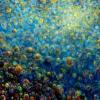
David Sinclair strikes again
#121
Posted 28 December 2013 - 10:24 PM
#122
Posted 29 December 2013 - 12:03 AM
So, the gist of this seems to be that reduction in NAD+ was related to tissue hypoxia, which increased with aging. He bypassed the hypoxia and somewhat directly increased NAD+ levels. But what do we know about the cause of age-related tissue hypoxia? Anything we can do upstream of the NAD+ decline?
Actually, I think this is from an article I read about Sinclair's paper. The paper itself describes the condition as "pseudohypoxia," so maybe my question is bunk.
#124
Posted 01 January 2014 - 04:17 AM
2500mg for a person would not be getting anywhere near that level.
#125
Posted 01 January 2014 - 04:29 AM
The dosage which was discussed for mice was 400mg/Kg as I recall.
2500mg for a person would not be getting anywhere near that level.
That dose is probably coming from allometric scaling to calculate a Human Equivalent Dose. For mice, the usual conversion factor is 1/12.
400mg/kg * 1/12 * 70kg = 2333mg
#126
Posted 01 January 2014 - 07:18 AM
#127
Posted 01 January 2014 - 06:18 PM
A Comprehensive Review:
http://www.cominbio....ndNADPNADPH.pdf
Instead of theorizing, if some of this is true, it should be seen in lots of species including short lived ones such as c elegans, for which a lifespan test can be quickly done. Anyone in contact with a researcher working on c elegans and aging, who could be interested in trying? cheersNAD and NADP could be the fundamental common mediators
of nearly all major biological activities, including mitochondrial
function, energy metabolism, calcium homeostasis, antioxidation/
generation of oxidative stress, gene expression, immunological
functions, aging, and cell death
#128
Posted 01 January 2014 - 07:12 PM
"The NAD+ dependence of its deacetylase activity was fertile ground to sow the hypothesis that Sir2 could act as ametabolic sensor, capable of modulating gene expression according to the metabolic state of the cell. Supporting this hypothesis, several studies indicated that Sir2 could be a critical mediator of the beneficial effects of calorie restriction (CR) on yeast life span. The findings in yeast were soon transposed to metazoans such as Caenorhabditis elegans and Drosophila melanogaster, which also lived longer with extra copies of Sir2 homologs."
Source: The Secret Life of NAD+: An Old Metabolite Controlling New Metabolic Signaling Pathways Riekelt H. Houtkooper, Carles Cantó, Ronald J. Wanders, and Johan Auwerx Endocrine Reviews 2010 31:2, 194-223
Paper:
 Secret Life of NAD+.pdf 435.66KB
27 downloads
Secret Life of NAD+.pdf 435.66KB
27 downloadsThere are other papers indicating effects of NAD+ and precursors as well on longevitiy of C elegans, but my search library appears to be offline today (I guess because it's New Years day here). Here's the source to another one you may want to find that also references "NAD+, longevity, & C elegans", but I can't pull up the entire full text at the moment to include it here:
Paper: Increased dosage of a sir-2 gene extends lifespan in Caenorhabditis elegans. Nature 410:227–230
I'll attach it if my university resources come back online any time soon.
-----
My library resources came back online, so here's the other paper/letter:
 Extends lifespan in C elegans.pdf 191.27KB
6 downloads
Extends lifespan in C elegans.pdf 191.27KB
6 downloads"In Caenorhabditis elegans, mutations that reduce the activity of an insulin-like receptor (daf-2) or a phosphatidylinositol-3-OH kinase (age-1) favour entry into the dauer state during larval development and extend lifespan in adults. Downregulation of this pathway activates a forkhead transcription factor (daf-16), which may regulate targets that promote dauer formation in larvae and stress resistance and longevity in adults. In yeast, the SIR2 gene determines the lifespan of mother cells, and adding an extra copy of SIR2 extends lifespan. Sir2 mediates chromatin silencing through a histone deacetylase activity that depends on NAD (nicotinamide adenine dinucleotide) as a cofactor. We have surveyed the lifespan of C. elegans strains containing duplications of chromosomal regions. Here we report that a duplication containing sir-2.1—the C. elegans gene most homologous to yeast SIR2—confers a lifespan that is extended by up to 50%. Genetic analysis indicates that the sir-2.1 transgene functions upstream of daf-16 in the insulin-like signalling pathway. Our findings suggest that Sir2 proteins may couple longevity to nutrient availability in many eukaryotic organisms."
Edit: Added the other paper about worm life extension.
Edited by trance, 01 January 2014 - 07:32 PM.
#129
Posted 04 January 2014 - 06:33 PM
#130
Posted 04 January 2014 - 07:39 PM
#131
Posted 04 January 2014 - 08:42 PM
Of the compounds discussed in this post, which one fits most the endogenous compound described in the press release? "Gomes found that by administering an endogenous compound that cells transform into NAD, she could repair the broken network and rapidly restore communication and mitochondrial function"
That's easy to answer. It's the compound itself, NAD, nicotinamide adenine dinucleotide, http://en.wikipedia....ne_dinucleotide
From source naturals or now foods, is fine...
In the trial, they used a precursor.
Edited by pedr0vsky, 04 January 2014 - 08:43 PM.
#132
Posted 05 January 2014 - 09:42 AM
Let us not forget the Resveratrol raises NAD+ levels.
http://precedings.na.../version/1/html
Yes, it's also mentioned in http://jcb.rupress.o...e-f7ead110e315:
"Here, we discuss different means of NAD+ modulation with a particular focus on compounds such as NAD+ precursors, PARP inhibitors, and resveratrol, and describe how these induce mitochondrial function and translate to clinical applications....
Besides physiological processes, NAD+ levels can be modulated pharmacologically. As a case in point, the polyphenol resveratrol, often described as a red wine compound, activates the energy sensor AMP-activated protein kinase (AMPK; Baur et al., 2006; Cantó et al., 2009), which in turn stimulates NAD+ (re)synthesis (Fulco et al., 2008; Cantó et al., 2009)....
Finally, it is encouraging that the AMPK agonist resveratrol also activates mitochondrial function in humans
(Timmers et al., 2011) at a dose that is more than 200-fold lower than the dose used in mice (Baur et al., 2006; Lagouge et al., 2006). Clinically, resveratrol improved metabolic parameters such as blood glucose and inflammatory markers (Timmers et al., 2012). Given the fact that several compounds are on the market (e.g., niacin), in clinical development (e.g., PARP inhibitors), or can be easily developed because they are natural products (e.g., NR), new detailed clinical studies targeting the NAD+/sirtuin pathway are to be expected soon."
BTW, what do you think of this: http://www.resveratr...tory-study/862/
Is it just a sales pitch or is there any value to these studies?
No, the compound is actually nicotinamide mononucleotide. See posts # 7 and 8Of the compounds discussed in this post, which one fits most the endogenous compound described in the press release? "Gomes found that by administering an endogenous compound that cells transform into NAD, she could repair the broken network and rapidly restore communication and mitochondrial function"
That's easy to answer. It's the compound itself, NAD, nicotinamide adenine dinucleotide, http://en.wikipedia....ne_dinucleotide
From source naturals or now foods, is fine...
In the trial, they used a precursor.
Edited by Iporuru, 05 January 2014 - 09:44 AM.
#133
Posted 05 January 2014 - 12:22 PM
Current approaches to increasing NAD+ concentrations and sirtuin activation include
•provision of NAD+ precursors (nicotinic acid, nicotinamide riboside, injections of nicotinamide mononucleotide)
•AMPK induction to increase levels of NAD+ synthesis (exercise, fasting, aspirin, metformin, berberine, etc)
•CD38 inhibition (flavonoids especially luteolinidin, cyanidin-3-O-β-glucoside, and luteolin appear promising, see post 58)
•poly (ADP-ribose) polymerase-1 (PARP-1) inhibition.
I’m not sure PARP-1 inhibition is a good idea in the light of this:
http://jpet.aspetjou...e&submit=Submit
“Genotoxins damage DNA and cause DNA strand breaks. These DNA breaks are sensed by a DNA repair system, which includes PARPs and a sirtuin, SIRT6. The activation of PARP, in particular, causes a rapid synthesis of poly(ADP-ribose) at the site of the strand break, and when this system is overactivated, it can significantly deplete cellular NAD+.
(...)
A considerable body of evidence implicates NAD+ metabolism as important for the maintenance of genome stability (Hassa et al., 2006). Consistent with a role for PARP in DNA repair, PARP–/– animals exhibit hypersensitivity to alkylating agents and ionizing radiation (Decker and Muller, 2002) and that some cancers are found to have reduced PARP activities (Decker and Muller, 2002).”
(...)
In vitro results indicate that PARP-1 inhibition leads to delayed DNA repair, particularly base excision repair (Hassa et al., 2006). Consistent with a role for PARP in DNA repair, PARP–/– animals exhibit hypersensitivity to alkylating agents and ionizing radiation (Hassa et al., 2006). Some data appear to indicate that a normal if not an augmented NAD+ level in tissues aids in DNA repair and may reduce carcinogenesis. Some hints that this may be true are found in epidemiological studies that show that PARP-1 activity levels are lower in families predisposed to cancer (Decker and Muller, 2002) and that some cancers are found to have reduced PARP activities (Decker and Muller, 2002). Another finding of interest is that PARP activity may be generally higher in long-lived people, suggesting that PARP activity levels may have an antiaging effect (Decker and Muller, 2002).”
Edited by Iporuru, 05 January 2014 - 12:23 PM.
#134
Posted 06 January 2014 - 05:09 PM
http://www.annualrev...archHistoryKey=
“It should be realized that not every cell is capable of converting each NAD+ precursor to NAD+ at all times. Exp<b></b>ression of the eight step de novo pathway is required to utilize trp. Exp<b></b>ression of the Nampt pathway is required to utilize Nam. Exp<b></b>ression of either the Nrk pathway or nucleoside phosphorylase and the Nampt pathway is required to utilize NR. Finally, exp<b></b>ression of the Preiss-Handler pathway is required to utilize Na. Because tissue and cell type specific enzyme exp<b></b>ression differences exist, the precursors are differentially utilized in the gut, brain, blood, and organs. Understanding the unique aspects of metabolism of each precursor is necessary to define the mechanisms underlying the physiological effects and side effects of each. (…)”
“Classical feeding studies showed that exogenously added Na is a better NAD+ precursor than Nam in liver, intestine (16), and kidney (50). Similarly, rats fed Na showed elevated levels of NAD+ in the heart and Sidney in addition to blood and liver, which are sites of Na and Nam utilization (41). Classical studies have been corroborated by a recent report that mouse Naprt1 is expressed in intestine, liver, kidney, and heart. In addition, human Sidney cell lines are able to use Na to increase intracellular NAD + concentration in a manner that depends on the NAPRT1 gene.”
#135
Posted 09 January 2014 - 04:22 AM
My major concern is hypouricemia, which I'm already at risk for due to a low purine vegan diet. Uric acid is usually thought of in terms of gout, but if high uric acid is protective against Parkinson's, is clearly possible very low uric acid could increase risk of PD and other oxidative stress disorders.
I suppose the best option would be to just monitor blood uric acid to ensure it doesn't fall too low, and add inosine and glycine as necessary.
One thing to consider is whether your diet includes sufficient zinc. It's hard to measure zinc deficiency reliably, and too much zinc is harmful. However, a lack of zinc can drive down uric acid. Phytates reduce zinc absorption. Many plants are good sources of zinc, including whole grains, beans, and nuts.
#136
Posted 09 January 2014 - 08:30 PM
http://www.annualreviews.org/doi/abs/10.1146/annurev.nutr.28.061807.155443?prevSearch=Katrina%2BL.%2BBogan&searchHistoryKey=
„As schematized in Figure 1, the reason that a poor diet can produce a requirement for Na and Nam is that Trp, Na, and Nam are all NAD+ precursors (7). Trp is converted to NAD+ through an eight-step de novo pathway (Figure 2), so termed because the Nam base is essentially made from scratch. In contrast, Na and Nam are considered “salvageable precursors” that require only three steps and two steps, respectively, to rebuild NAD+. Nicotinamide riboside (NR) is an additional salvageable NAD+ precursor vitamin with a two-step pathway (14) and a three-step pathway (8) to form NAD+. (…)”
“Studies in Saccharomyces cerevisiae have shown that, like Na and Nam, NR is an NAD+ precursor
that contributes to maintaining intracellular NAD+ concentration and improves NAD+- dependent activities in the cell including Sir2-dependent gene silencing and longevity (8, 14).”
Elevation of Cellular NAD Levels by Nicotinic Acid and Involvement of Nicotinic Acid Phosphoribosyltransferase in Human Cells http://www.jbc.org/c...nt/282/34/24574
“We here identified NA phosphoribosyltransferase (NAPRT) in humans and provided direct evidence of tight link between NAPRT and the increase in cellular NAD levels. (…)
In mammals, which lack nicotinamidase (17), NA seems to be derived primarily from the extracellular sources. Contrary to Nam, exogenously added NA has been clearly shown to be a better precursor in NAD biosynthesis than Nam and markedly increases NAD levels [emphasis mine] in mammalian tissues including liver, kidney, and heart in classical studies.(…)
As shown in Fig. 5, the addition of NA in culture medium markedly increased the total cellular NAD contents in a dose-dependent manner. As low as 1 uM, NA significantly increased the cellular NAD contents. A nearby 2-fold increase beyond the basal level was observed with 5-10 uM NA. The increase in NAD contents correlated well with the accumulation of NaAD in the cells. (…)
We here showed that NA increases cellular NAD levels from the basal of around 0.5 mM to near 1 mM. (…)
See also Darryl’s post #46 for more references.
So if 5-10 uM NA can double the amount of intracellular NAD – what amount of ingested NA does it translate into? Could someone who is proficient in biochemistry calculate that?
Besides, do we know what concentrations of NAD were achieved through NMN in the study mentioned at the beginning of the thread? How much were they increased from the basal level?
Anyway, don’t you think that doubling the NAD levels through NA is worth considering?
Another thing is resveratrol. In the paper mentioned by ianlib in post #129 they say:
“We report for the first time that resveratrol induces a dose dependent increase in activity of the NAD+ synthetic enzyme nicotinamide mononucleotide adenylyl transferase (NMNAT1). Activation of NMNAT1 by resveratrol in cultured primary human astrocytes and neurons increased NAD+ levels by up to 5 fold. As SIRT1 requires NAD+ as a substrate to perform its gene silencing function, higher NAD+ levels will enhance SIRT1 activity. This finding suggests that resveratrol may promote SIRT1 function by enhancing NAD+ synthesis in whole cell systems without requiring direct activation.”
Isn’t that extraordinary? And again, could someone calculate the dose of resveratrol needed to achieve this 5-fold increase (using data from the study) and compare it with the levels of NAD achieved in the recent study?
How does it compare with Nicotinamide Riboside?
What if we combine resveratrol and Nicotinamide Riboside and/or NA (at a reasonable dose)?
#137
Posted 10 January 2014 - 05:26 PM
Yes. A ways back in this thread is a picture of barrels of nicotinamide riboside from a dealer on Alibaba. The 400 mg/kg dose in mice could probably be allometrically scaled to humans; for mice it's a factor of 12. 400/12 = 33.3 mg/kg; 33.3 mg/kg * 70 kg = 2.3 grams. Niagen is $12.80/gm, so you're looking at $29/day. Not very reasonable. Nicotinic acid, on the other hand, is dirt cheap. I'm already taking a gram a day in order to drive down my high lp(a). If it's having any effect on energy levels, I can't distinguish it from c60, which I also use. Considering the level of flushing I get with 500mg NA twice a day, I'd hate to think of megadosing it.
smithx, where can you get NR for $3.20 a gram?
The flushing at a dose goes away after a while. I can take up to 2g with no flushing when I originally had bad flush at a mere 100mg.
#138
Posted 11 January 2014 - 08:09 AM
Yes. A ways back in this thread is a picture of barrels of nicotinamide riboside from a dealer on Alibaba. The 400 mg/kg dose in mice could probably be allometrically scaled to humans; for mice it's a factor of 12. 400/12 = 33.3 mg/kg; 33.3 mg/kg * 70 kg = 2.3 grams. Niagen is $12.80/gm, so you're looking at $29/day. Not very reasonable. Nicotinic acid, on the other hand, is dirt cheap. I'm already taking a gram a day in order to drive down my high lp(a). If it's having any effect on energy levels, I can't distinguish it from c60, which I also use. Considering the level of flushing I get with 500mg NA twice a day, I'd hate to think of megadosing it.
smithx, where can you get NR for $3.20 a gram?
The flushing at a dose goes away after a while. I can take up to 2g with no flushing when I originally had bad flush at a mere 100mg.
Amen to that. Same here. Now, I need to really read up on what that entails. Studies say it ain't histamine downregulation. Somehow linked to methylation, methylfolate and tetrahydrobioptern (BH4). And, for the long haul, I need to know HOW? I will not, repeat NOT, eat stuff for decades without knowing that.
Edited by Ukko, 11 January 2014 - 08:11 AM.
#139
Posted 12 January 2014 - 07:59 AM
http://www.kurzweila...chemoprevention
#140
Posted 13 January 2014 - 10:26 PM
http://www.alibaba.c..._1341_23_7.html
At that price it might be worth speculating on getting a couple of KG, and then testing it once it arrives. I can do GC/MS testing if someone wants to arrange the buy with them or another supplier.
#141
Posted 14 January 2014 - 02:30 AM
We can pick it up for $4,200 (US) / 500g at 95% purity or greater
I'll use escrow and have it independently tested prior to releasing the funds if anyone is interested.
This will be a China purchase, but again it'll be tested
As an aside, I have a bunch of fresh high quality miscellaneous compounds that I'd like to sell at or near my cost.
I don't want to appear to be spamming so I'll ask those in the know if this is an appropriate topic for this forum before discussing it further
#142
Posted 14 January 2014 - 03:01 AM
http://sourcing.alib.../240411035.html
I was not considering that because I thought it had to be injected.
I'd like to get a group buy for (beta) nicotinamide mononucleotide together.
We can pick it up for $4,200 (US) / 500g at 95% purity or greater
I'll use escrow and have it independently tested prior to releasing the funds if anyone is interested.
This will be a China purchase, but again it'll be tested
As an aside, I have a bunch of fresh high quality miscellaneous compounds that I'd like to sell at or near my cost.
I don't want to appear to be spamming so I'll ask those in the know if this is an appropriate topic for this forum before discussing it further
#143
Posted 14 January 2014 - 09:52 PM
I don't think that injections would be required nor is there any reason to think that the high dosages used in these rodent experiments would be needed if taken chronically.
#144
Posted 14 January 2014 - 09:58 PM
These guys claim they can supply nicotinamide mononucleotide for $100 per Kg.
http://sourcing.alib.../240411035.html
I was not considering that because I thought it had to be injected.
Based on buying 100Kg minimum order. I guess it depends on how much it really costs to produce this stuff.
#145
Posted 14 January 2014 - 09:58 PM
#146
Posted 14 January 2014 - 10:21 PM
This outfit claims they can supply nicotinamide riboside for $100-200 per Kg.
http://www.alibaba.c..._1341_23_7.html
At that price it might be worth speculating on getting a couple of KG, and then testing it once it arrives. I can do GC/MS testing if someone wants to arrange the buy with them or another supplier.
There is a group buy thread: http://www.longecity...uy/page__st__60
Would you be willing to help orchestrate it with your expertise?
#147
Posted 15 January 2014 - 07:35 PM
#148
Posted 28 January 2014 - 06:13 PM
#149
Posted 29 January 2014 - 12:18 AM
https://www.biotivia..._antiaging.html
I am ordering niagen
#150
Posted 29 January 2014 - 05:10 AM
This is my first post here and I'm a bit of a novice, but really just want to learn more about NAD+ production and this cycle in general. The only advice I had gotten prior to reading this thread was to take NADH... which appears to be terrible advice
Now for the brain pain. A prior member spoke of MTHF mutations, which I unfortunately am afflicted with. Both genes too. Luckily, this was caught and I am thus taking 20mg of 5-MTHF daily, (yay for compounding pharmacies.) It's helped a little with my permanent brain fog, but most of the initial overly positive effects have mellowed. Anyways, I was reading here that, in likewise affected people, taking supplements like Nicotinamide Riboside can actually make this methylation issue worse? Apologies if I'm misunderstanding.
I also take a B-Complex that has 80mg of Niacinamide as it's active form of Niacin. There's conversation here that niacinamide also causes issues, so are there other supplements to be worried about? Currently I'm taking NAC, ALC, 5-HTP, B6 complex, 5-MTHF, Vitamin D, Milk Thistle, an additional B12, Huperzine-A, and a High concentration Omega 3. Anything to worry about in this regard?
Also, although I have a, Kreb's Cycle for Dummy's, understanding of this process, I was wondering if anyone knew how therapeutic doses of amphetamines play into this. It seems to increase neurological recovery, and speed recovery of post stroke victims for example, but I might be reading into a connection where none exist, (unfortunately I can't link until after my 10th post,) I've been on 60mg of Adderall a day for a decade, so I'm just wondering if anyone had any insight if this is a positive/negative in regard to the discussion here.
I hope this isn't too off topic, and I apologize that it seems a very self-centered initial contribution. In actuality, answers here would help a great deal of people I know, so I would sincerely appreciate any feedback.
Thank you all for your patience.
Edited by Dimmy, 29 January 2014 - 05:11 AM.
Also tagged with one or more of these keywords: aging, aging theories, david sinclair, mitochondria, nad, sinclair, niagen, nmn, nicotinamide riboside
Science & Health →
Supplements →
"Why David Sinclair’s Supplement Stack Keeps Changing"Started by osris , 18 Dec 2025 |
|

|
||
Science & Health →
Supplements →
NAD+ →
NMN Stands Apart From Other NAD+ PrecursorsStarted by ta5 , 05 Oct 2025 |
|

|
||
Science & Health →
AgingResearch →
Biomarkers & Genes →
Is Nicotinic Acid Bad For Longevity?Started by Michael Lustgarten , 21 Sep 2025 |
|

|
||
Science & Health →
AgingResearch →
Aging Theories →
Genomic Failure HypothesisStarted by johnhemming , 09 Aug 2025 |
|

|
||
Science & Health →
Supplements →
Ketones protect the brain and prevent age-related damageStarted by smithx , 04 Jun 2025 |
|

|
2 user(s) are reading this topic
0 members, 2 guests, 0 anonymous users
















































